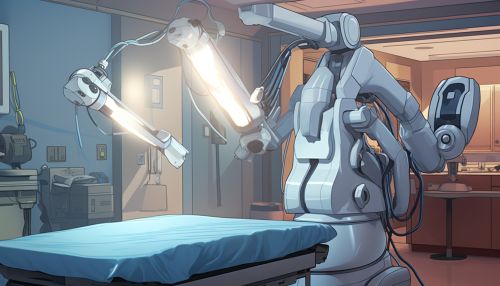The Role of Robotics in Minimally Invasive Surgery
Introduction
Robotic technology has revolutionized many aspects of modern life, including the field of surgery. One of the most significant advancements in this area is the application of robotics in minimally invasive surgery (MIS). This article explores the role of robotics in MIS, detailing the benefits, challenges, and future prospects of this innovative approach.


Overview of Minimally Invasive Surgery
Minimally invasive surgery, also known as keyhole surgery or laparoscopic surgery, is a surgical technique that aims to minimize the size and number of incisions made during a procedure. This approach contrasts with traditional open surgery, where a large incision is made to access the surgical site. MIS has several advantages, including reduced pain and scarring, shorter hospital stays, and quicker recovery times.
Role of Robotics in Minimally Invasive Surgery
The introduction of robotic systems in MIS has further enhanced the benefits of this surgical approach. Robotic systems, such as the da Vinci Surgical System, provide surgeons with enhanced capabilities, including high-definition 3D vision, increased precision, and improved dexterity.
Enhanced Vision
Robotic systems provide surgeons with high-definition, 3D vision of the surgical site. This enhanced vision allows for greater accuracy during surgery and can lead to improved patient outcomes.
Increased Precision
Robotic systems offer increased precision compared to traditional surgical methods. The robotic arms can move in ways that a human hand cannot, allowing for more precise movements and less damage to surrounding tissues.
Improved Dexterity
Robotic systems improve a surgeon's dexterity by filtering out hand tremors and allowing for smooth, controlled movements. This improved dexterity can be particularly beneficial in complex surgeries where precision and control are paramount.
Benefits of Robotic Minimally Invasive Surgery
The use of robotics in MIS offers several benefits over traditional surgical methods. These benefits include improved surgical outcomes, reduced patient discomfort, and increased surgical capabilities.
Improved Surgical Outcomes
Robotic systems can lead to improved surgical outcomes due to their enhanced vision, precision, and dexterity. These features allow surgeons to perform complex procedures with greater accuracy, potentially reducing complications and improving patient outcomes.
Reduced Patient Discomfort
Robotic MIS often results in less pain and scarring compared to traditional surgery. This is because the robotic system can perform the surgery through smaller incisions, reducing damage to surrounding tissues.
Increased Surgical Capabilities
Robotic systems can perform complex procedures that may be difficult or impossible with traditional surgical methods. This increased capability can expand the range of surgeries that can be performed minimally invasively, benefiting a wider range of patients.
Challenges and Future Prospects
Despite the many benefits of robotic MIS, there are also challenges to its widespread adoption. These challenges include the high cost of robotic systems, the need for specialized training, and concerns about the dehumanization of surgery. However, ongoing research and technological advancements are likely to address these challenges and further enhance the role of robotics in MIS.
